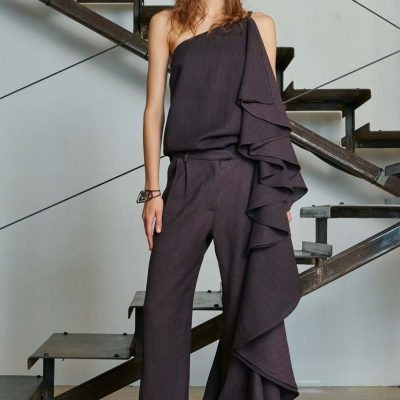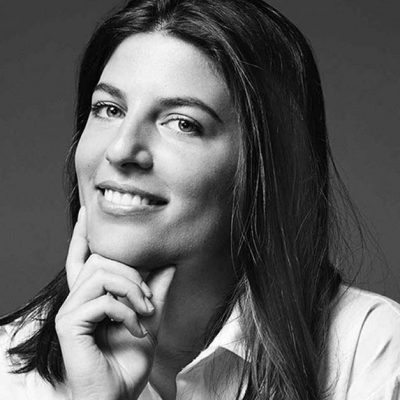Though a millennial, Rosie Assoulin’s sense of style is cool, trend-proof, and timeless
by Tiffany Press
The tale of the American fashion wunderkind is not a new one. Depending on a reader’s level of interest in the industry, he or she might have seen it dozens of times: Marc Jacobs in the ’90s, Proenza in the early aughts, and Alexander Wang soon after. More of these young designers will come along, too—bringing fresh, highly identifiable points of view to the industry, and in time their names often become a bit bigger than their ideas.
These newcomers are also typically lauded for the ability to change the direction, timing, or sensibilities of our beloved business. Not simply creative directors, they are often cultural directors who dictate how fast we move in any particular way. Interestingly enough, and more often than not, designers passing this torch are male, and the brand presidents hiring creative designers tend to be as well—a bizarre reality, particularly in the world of womenswear. It’s decidedly not a regular occurrence for a woman in her 20s to break into the tightly-guarded network that reroutes the way we dress, but that’s very happily what we have here.
Rosie Assoulin, to some, may seem like a walking embodiment of what we’ve come to associate with Millennial ideals… young, attractive, a fashion school dropout, and close friends with one of the pioneering new-media fashion publishers (Leandra Medine of Man Repeller; aka the Millennial Cathy Horne). Assoulin’s sense of style is cool and trend-proof. She looks, sounds, and lives like a woman other women of her generation might want to be.
Beyond her youth and covetable level of cool, Assoulin has demonstrated the skill set of a veteran. After only four months as a design student at The Fashion Institute of Technology, she went on to sharpen her craft with legends of form and femininity Oscar de la Renta and Alber Elbaz—finding a unique voice and developing it to pitch-perfect excellence.
She took her strengths and created a universe all her own, where luxury meets wearability—where reality is wrapped in fantasy (or perhaps vice versa, depending on the wearer), and her ability to approach the modern desire for femininity is unmatched. She has also defined a “Rosie Assoulin” woman without being pigeonholed into a hyper-specific category of style—an increasingly hard balance to strike in fashion. In the process, Assoulin has amassed a cult following of socalled “man repelling” women and young appreciators of couture, and has branded her aesthetic—one rapidly recognizable on web sites like Shopstyle, Modaoperandi, and Net-a-Porter to brick-and-mortars like Bergdorf Goodman.
She is clearly a student of the way women own clothes, too, which is starkly different from how women interpret clothes. Consumers of fashion, specifically in the current atmosphere, are riding the line between individuality and cult allegiance. They want to be recognized as following a fashion theology
After only months as a student at The Fashion Institute of Technology, she sharpened her craft with legends of form and femininity Oscar de la Renta and Alber Elbaz—finding a unique voice and developing it to pitch-perfect excellence.
but want to distinguish themselves from the rest. Of course, you have your tribes (proud members of Alessandro Michele’s hippie nerds at Gucci or Hedi Slimane’s rough luxe moto gang at Saint Laurent). However, beyond those who represent their loyalty with literal interpretations, the great majority of women relish not only aligning themselves with a designer, but also living in their clothes…not modeling them.
The Rosie Assoulin aesthetic stretches the wearers connection to the pieces, and her customer’s relationship to her style is visual, but equally visceral.
In the hands of this Millennial, beauty is not only in the details but also in the devotion.
Rosie Assoulin
rosieassoulin.com






